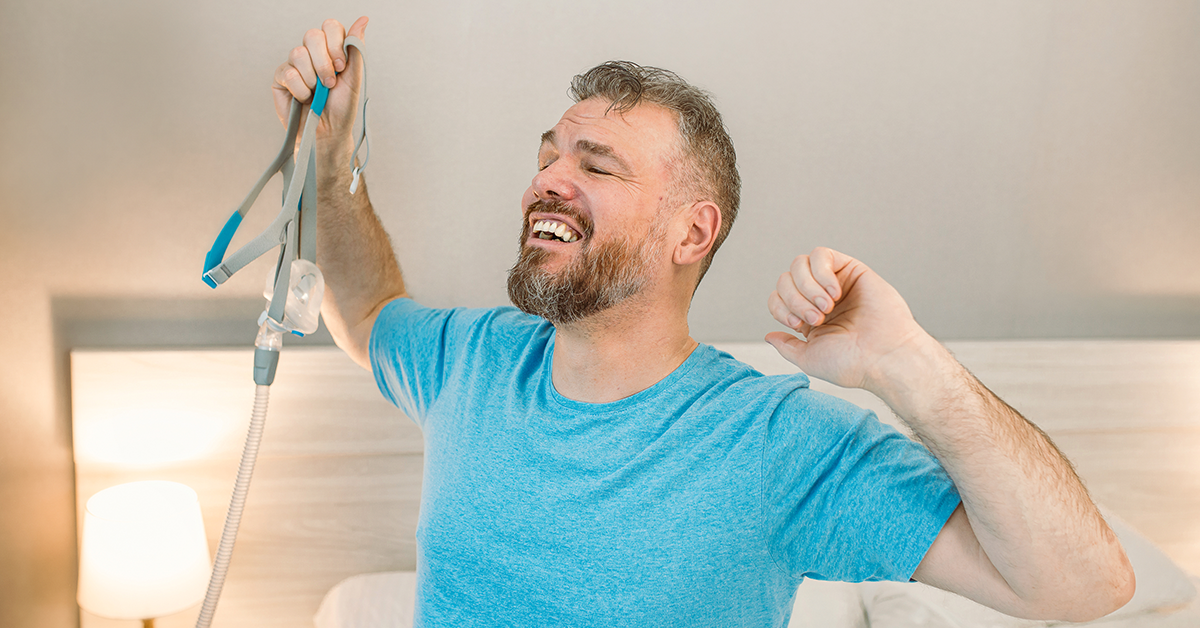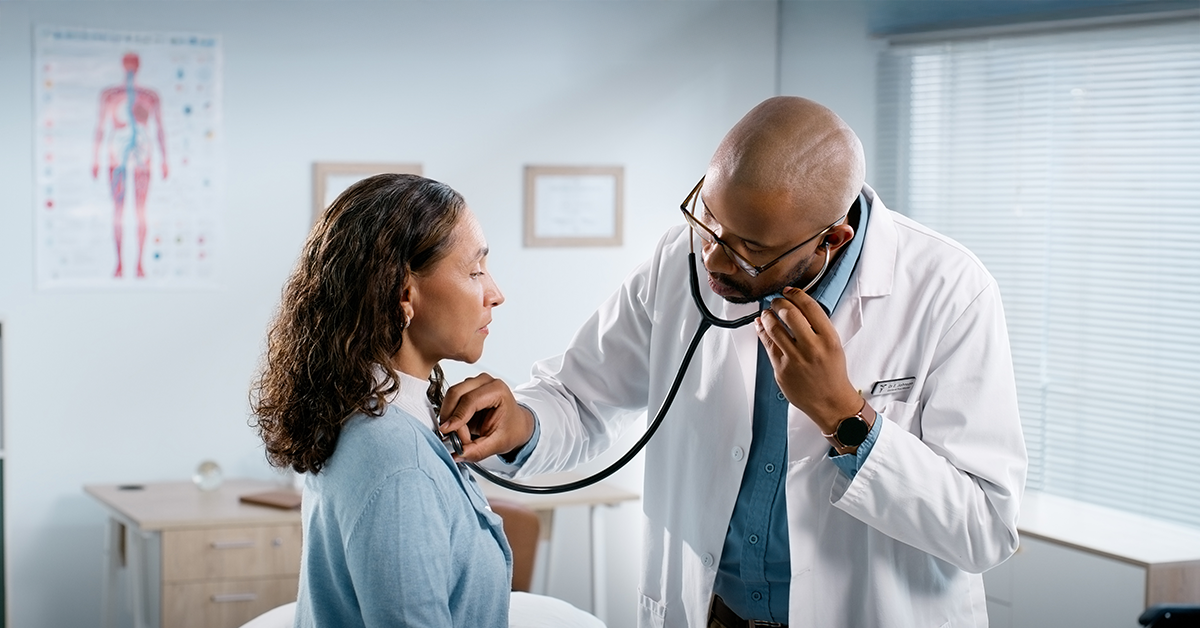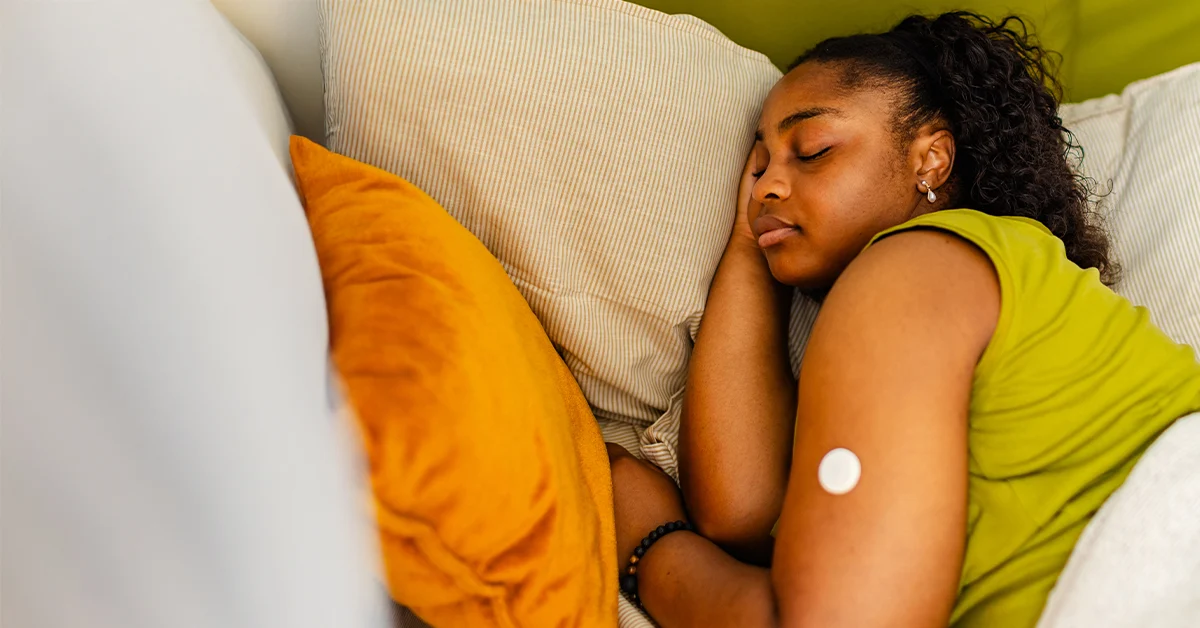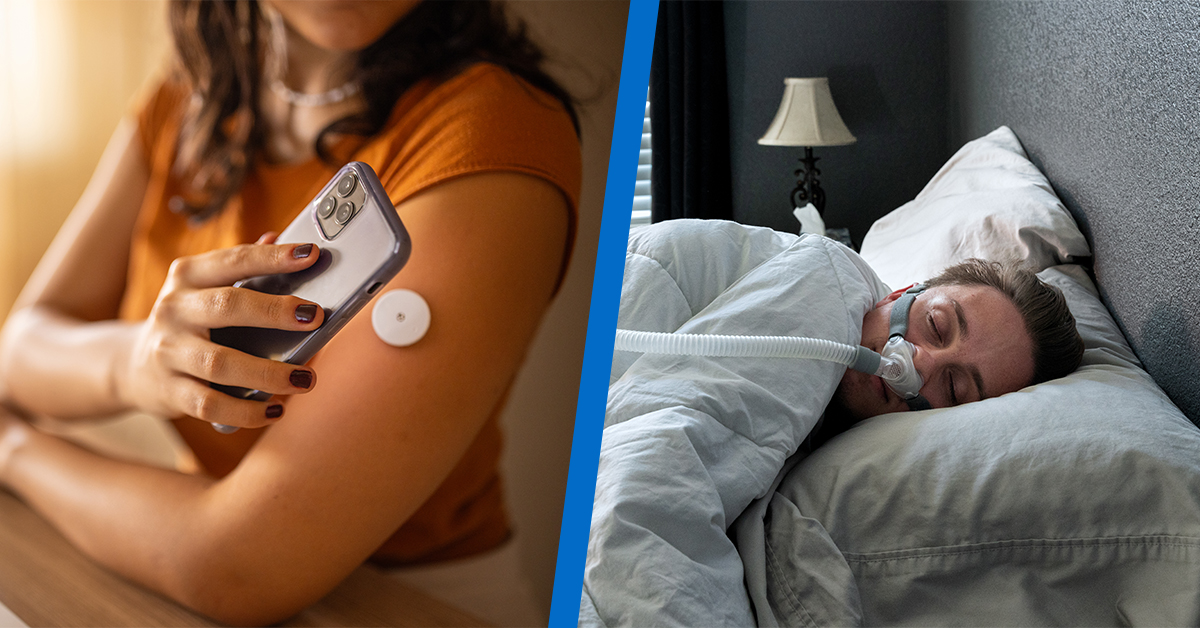The Links Between Two Distinct Sleep Disorders
According to the American Sleep Association, almost 70 million Americans have a sleep disorder. The two most common: sleep apnea and insomnia.
Sleep apnea affects more than 22 million people in this country. And 1 in 3 American adults suffer from insomnia.
Apria Healthcare VP of Sleep Business Robert Miller cautions, “If not managed properly, both can increase your risk for serious health conditions and negatively impact your quality of life.”
Research reveals a link between sleep apnea and insomnia.
The Link Between Sleep Apnea and Insomnia
So does sleep apnea cause insomnia—and vice versa? While they are two distinct sleep disorders, they are related. Studies reveal that up to 60% of people diagnosed with either sleep apnea or insomnia are likely to be diagnosed with the other sometime in the future. This is called a “co-morbid condition.”
Insomnia is a symptom of sleep apnea. That’s because the obstructed breathing caused by sleep apnea causes the sleeplessness of insomnia.
People with sleep apnea who struggle to fall and stay asleep may also have underlying insomnia.
The first step to effectively treating these conditions is to have a thorough understanding of both.
The Facts About Sleep Apnea
Sleep apnea is a serious medical condition that happens when your airway becomes obstructed during sleep. This reduces the flow of oxygen to vital organs and prevents you from breathing normally. The result: your body responds by forcing you to wake up to restart the breathing process.
This process can occur hundreds of times throughout the night, completely disrupting your sleep cycle.
If untreated, sleep apnea increases your risk for a variety of other serious health issues, including type 2 diabetes, heart disease, obesity, eye problems, and depression.
The Symptoms of Sleep Apnea
- Chronic snoring
- Insomnia
- Gasping for air while sleeping
- Excessive daytime sleepiness (also called hypersomnia)
- Depression, irritability, or mood swings
- Memory loss
- Night sweats, morning headaches, and heartburn
- Dizziness when you awake (due to low oxygen levels)
- Difficulty focusing or thinking clearly
- Dry mouth or sore throat upon awakening
- Frequent need to urinate during the night
The Risk Factors for Sleep Apnea
- Being overweight
- Family history of sleep apnea
- Smoking
- Using alcohol, sedatives, or tranquilizers
- Menopause: Women’s risk increases after menopause.
- Being male
- Being older
- Nasal congestion
The Treatments for Sleep Apnea
Lifestyle changes
These are the important first steps to managing your sleep apnea. Changes may include:
- Developing healthy sleeping habits
- Following a heart-healthy diet
- Losing weight
- Stopping smoking
- Not using alcohol or sleeping pills
- Treating allergies, especially nasal allergies
- Sleeping on your side
- Exercise
- Decreasing congestion with humidifiers or nasal sprays
Continuous positive airway pressure (CPAP)
CPAP is considered the “gold standard” for treating sleep apnea. There are more than 8 million CPAP users in the US.
CPAP involves wearing a mask over your nose or mouth while you sleep. The mask is connected to a machine that delivers a constant flow of air to keep your airways open so you can breathe—and sleep—normally.
The Facts About Insomnia
Insomnia is a sleep disorder that makes it difficult for you to fall asleep and stay asleep. There are two types of insomnia:
- Acute (short-term) insomnia, which occurs when you have a hard time sleeping for a few nights a week for up to three months
- Chronic (long-term) insomnia, which can last for months or even years
Over time, insomnia can lead to serious health conditions: heart disease, high blood pressure, depression and anxiety, and obesity.
The Symptoms of Insomnia
The primary symptom of insomnia is difficulty falling or staying asleep. Other symptoms include:- Daytime fatigue
- Difficulty concentrating or focusing
- Loss of memory
- Irritability, depression, and moodiness
- Poor school or work performance
- Increased risk for accidents
- Having anxiety about sleeping
The Risk Factors for Insomnia
- Gender—women tend to have insomnia more than men
- Family history of insomnia
- Stress
- Caffeine and alcohol
- Chronic pain
- Being older
- Menopause
- Poor sleep habits
And, yes, sleep apnea is a symptom of insomnia!
The Treatments for Insomnia
In most cases, short-term acute insomnia can often be treated by improving your sleep environment and habits. Acute insomnia often resolves itself.
For long-term chronic insomnia, the following treatments are often used:
Cognitive behavioral therapy (CBT)
A common type of talk therapy where you work with a therapist to manage any psychological issues. CBT is often the initial treatment of chronic insomnia because it doesn’t require medication.
Medications
- Benzodiazepines, such as Valium
- Nonbenzodiazepines
- Melatonin receptor agonists
- Over-the-counter medications
- Antidepressants and antipsychotics
The Treatment for Both Sleep Apnea and Insomnia
Without treatment, people with both sleep apnea and insomnia run the risk of developing depression, chronic pain, congestive heart failure, and hypertension.
Robert Miller states, “Although there are no therapies to treat sleep apnea and insomnia simultaneously, both can be treated effectively, separately.”
However, research demonstrates that sleep apnea can negatively affect the effectiveness of some insomnia medications. And insomnia can hamper the effectiveness of CPAP used to treat sleep apnea.
That’s why it is critical to work with your doctor to customize a treatment plan specifically for you. The goal is to ensure you get the quality and quantity of sleep you need at night so you can feel your best during the day.
Speak to a sleep coach
We’re here to help you manage your sleep apnea. To speak directly to a live sleep coach, call 877-255-2426 or visit www.apria.com/services/sleep-apnea.
References
1. Sarjoo, A. (2022, June 24). Nearly 3 in 10 Americans Have Insomnia: Survey. WebMD. https://www.webmd.com/sleep-disorders/news/20220624/nearly-3-in-10-americans-insomnia-survey.
2. Ong JC, Crawford MR. Insomnia and Obstructive Sleep Apnea. Sleep Med Clin. 2013 Sep 1; 8(3): 389–398. https://www.ncbi.nlm.nih.gov/pmc/articles/PMC3763954/.
3. Howard, M. Insomnia vs. Sleep Apnea: How Do I Know Which One I Have? WebMD. https://www.webmd.com/connect-to-care/sleep-apnea/insomnia-versus-sleep-apnea.
4. Jividen, S. (2022, February 22). What’s the Difference Between Insomnia and Sleep Apnea? Very Well Health. https://www.verywellhealth.com/insomnia-vs-sleep-apnea-5213997.
LEGAL DISCLAIMER: Material in this newsletter is provided for general health education and informational purposes and to provide references to other resources only; it may not apply to you as an individual. While Apria Healthcare believes that the information provided through this communication is accurate and reliable, Apria Healthcare cannot and does not make any such guarantee. It is not intended to be a replacement for professional medical advice, evaluation, diagnosis, services or treatment (collectively, “medical treatment”). Please see your healthcare provider for medical treatment related to you and your specific health condition(s). Never disregard medical advice or delay seeking medical care because of something you have read on or accessed through this website. Reading this newsletter should not be construed to mean that you have a healthcare provider/patient relationship.

.png)



